#Noritsu Scan
Explore tagged Tumblr posts
Text
Affordable Picture Framing in Chinatown

KT Colour is leading in the Digital Photo Printing industry. With the latest technology silver halide laser machine from Noritsu, Their photo quality is beyond compete from the rest. They used FujiFilm supreme papers and chemicals for the highest quality and lasting color. Not only printing, they also provide scanning or archiving photos, documents, 35mm films, and slides to digital files. Visit us-https://goo.gl/maps/1GKEwPnKFUf6hEou9
0 notes
Video
TIRED FENCE by Luke Hyland Via Flickr: Fujica AX-3 | X-FUJINON 55mm 1:1.6 | KODAK ULTRAMAX 400 Scanned with NORITSU KOKI EZ Controller Lab developed in | C-41 Colour
1 note
·
View note
Text







Pentax K1000 x Harman Phoenix 200 -1 (scanned on a Noritsu)







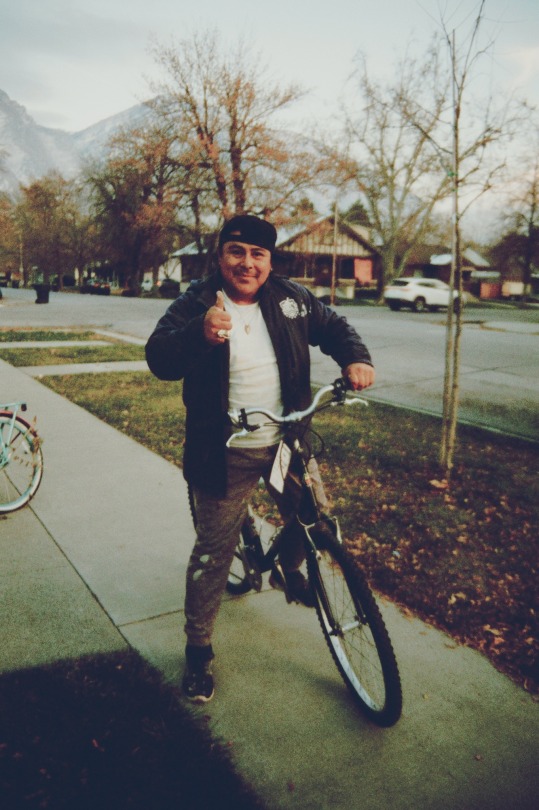


1 note
·
View note
Photo

… or this one? (Just be picky with your likes!)
#photographers on tumblr#original photographers#plants and flowers#flowers#Echinacea#Sedum#Ferrania P30 Alpha#FILM Ferrania#Kodak D-76#Leica MP 0.85#Leica Dual-range Summicron 2/50#Noritsu Scan#Photoshop#colorized#Meldorf
472 notes
·
View notes
Photo

Photo Coquí in work habitat on the #Noritsu #scanning San Francisco’s #35mm print orders. Work becomes playful when you’re in costume ! This is the most #patriotism you’ll see from me homies ... #flashback to last Wednesday, #Halloween, as super #Coquí! #LoveWhatYouDo #shootfilm #bts #behindthescenes #cosplay #frog #costume #ItsNotEasyBeingGreen #photography #lablife #photographerlife #PuertoRico #greeneyes #wearefilmfolks #35mm #halloween #october #35mmfilm #filmphotography #kodak #kodakmoment Photos by @camerawoman01 (at Oscar's Photo Lab) https://www.instagram.com/p/Bp5kEFsB3qP/?utm_source=ig_tumblr_share&igshid=cf04ew5jk80h
#noritsu#scanning#35mm#patriotism#flashback#halloween#coquí#lovewhatyoudo#shootfilm#bts#behindthescenes#cosplay#frog#costume#itsnoteasybeinggreen#photography#lablife#photographerlife#puertorico#greeneyes#wearefilmfolks#october#35mmfilm#filmphotography#kodak#kodakmoment
2 notes
·
View notes
Text
The 7 stages of becoming a film scanner nerd
The 7 stages of becoming a film scanner nerd #believeinfilm #filmisnotdead

The 7 stages of becoming a film scanner nerd What’s behind that door? (more…)
View On WordPress
#analog#analogphotography#believe in film#believeinfilm#film#film is not dead#filmisnotdead#filmphotography#filmscans.ch#fotografie#LS-600#noritsu#Noritsu LS-600#photography#scanner#scanning#service
2 notes
·
View notes
Text
Which 35mm or 120 Film Should I buy?
Ever wonder as to “which 35mm or 120 medium format film I should buy?” or “35mm film shop near me” or “where can I buy 35mm or 120 or C41 film?” or “where can I black & white film near me?” or “where can I buy color film?”
If you asked any of the above questions, this post is for you. So, you are just starting into film photography, let’s take an estimate of costs associated with your new passion:
Camera - handed-down, inherited - no cost. Unless it needs light-seals or mirror foam replaced. Then, $15-75. $15 to DIY, cheaply. Go to a hobby store and buy felt and foam and watch YouTube to DIY. Yay! $75 to buy laser-cut seals + cost of labor to remove the old seals and foam completely otherwise, the new seals and foam won’t adhere (stick) correctly. $75 also includes the cost to film-test your camera after the pro installs the new light seals and foam to make sure that they were installed correctly and no light leaks exist. Otherwise, let’s say, you miraculously find both, a film-tested and a camera with replaced light seals and mirror foam online - say, a Pentax K1000 ($150-250) or a Canon AE-1 ($250-350) or an Olympus OM-2 series ($250-400) with the costs varying based on what lens you get with it.
Cost of the film - you can get basic black and white 35mm rolls for as low as $5. These would be like the Arista or Fomapan, 36 exposures. Of course, you will have the so-called learned folks on Facebook Groups having you believe that those films are of inferior quality or sh*t in their opinion. But, show them an image taken with those film stocks next to one taken with the more expensive film stocks taken with identical camera + lens setup and developed similarly and they would not be able to tell you which is which even if their life depended on it. Seriously. Try it. I have more than once done this test on various Facebook Groups with hilarious outcomes. So, you can follow a YouTube film photography guru and spend your money on a film that costs twice or thrice as much or you can tell yourself “I am a newbie to film photography, and $5 film that gives me 36 exposure is an affordable way to trial and error my learning.” I sell 25 varieties of films for color films, I typically recommend the $6 24 exp color films.
Cost of developing film - call it developing or processing, it all means the same. Your negative has to be treated with chemicals to make the images appear on them so that they can be scanned or printed. Your neighbor may do it for $5 a roll or even for free. Take it to CVS, Walgreens, Walmart, or, Target and they will charge you $18 or so and give you a set of prints and, a CD with your scanned images. What about your negatives? They destroy them. Yup. Too costly to return negatives back to the store or the Customer. Logistics and labor involved. And, they take 3-4 weeks. If you can live with that, go for it. Otherwise, there are several online outfits that do a fine job - The Dark Room is one of the most popular ones. For $20 including shipping and prints, negatives returned along with scans and, a 2-3 week turnaround, it is a good deal. I charge $36 inclusive of taxes to develop and scan a roll. No prints. $46 includes prints. I return the negatives. Scans are done at a pro lab that uses a Noritsu scanner and if you drop off the film on Monday before 3p, I return everything by Friday after 3p. So, take your pick - don’t mind waiting 2-3 weeks, go with a decent online pro lab. Want it sooner, come to me. Oh, one more thing. That neighbor that does it for free or for $5 - it is highly unlikely that they have a dedicated film developer and scanner like pro labs do. Chances are that they hand-develop the film. Meaning that there is no consistency from one roll to the next. Colors, contrast, dust, etc., may shift from roll to roll. Meaning that if you are a newbie learning film photography, you don’t know if your picture taking is off or if the development is off. I have one Customer that prides himself in learning film photography and developing simultaneously as he wants to save money. Wow. He has no reference or benchmarking on either his development or photography and therefore, in the long run, he is spending more than if he were to send his film to a pro lab for development. He would know where his photography is off. Oh well.
So here are my recommended films. I have shot all the films that I sell and developed them - you can find my pricing here:
NEWBIES
Black and white - Arista 100 or 400 24-36 exp. Fomapan is made by the same facility in Czechoslavia so, highly likely it is the same film but, slightly more in cost.
Color - Kodak Gold 200 or 400, Color Plus 24-36 exp. Oh, of course, Fuji Superia XTRA or Fuji 200.
POST-NEWBIES meaning you are ready for the next step
Black and white - Any of the Ilford or Kodak films with 50 ISO to 400 ISO such as Ilford PanF 50, Ilford Delta 100, Ilford FP4+ 125, Kodak TMAX 100, Ilford Delta 400, Ilford HP5+ 400, Kodak TMAX 400, Kodak TRIX 400. Plan on shooting in low light on 35mm, try out the Ilford Ilford Delta 3200 or the Kodak TMAX 3200. And, of course, there are boutique and rebranded films such as those marketed by Adox, Agfa, Bregger, Kosmo, and, others.
Color - Cine Still 50, Kodak Pro Image 100, Kodak Ektar 100, Portra 160, Portra 400, and, of course, Portra 800 which I find to be the most versatile color film I have ever shot with. Regardless of when I shoot with it - middle of a sunny day or evening or indoors, I am always happy with the results. The grain is noticeable given the higher ISO but, I find it quite pleasing.
DISPOSABLE CAMERAS
Having shot with the small variety of disposable film cameras out there, my preferred one is the Kodak 800 which goes by a couple of different names such as Kodak FunSaver 800 and Kodak Power Flash 800. As long it says 800 in the name which is for the ISO, you are good. It uses the Portra 800 film stock which as I explained above is the most versatile color film stock in my perception. Fujifilm QuickSnap disposable film cameras are okay as long as you are shooting in good light. Note that they use 400 ISO film as Fuji doesn’t make 800 ISO film as of 06/16/2021.
If you shoot regularly, you are spending more money than necessary if all you shoot with is disposable cameras. And, you are getting inferior results when compared to an SLR. Better to buy a quality point & shoot camera and then buy the film separately. Better yet, buy something like a Canon AE-1 Program and use it in point & shoot mode. Disposable cameras are made with the cheapest components that have to last just long enough for you to shoot one roll. The lens is made up of cheap plastic so the optics are okay. The Canon AE-1 Program is built from metal and the lens is made from metal and glass. No plastic there. So, your optics are superior which means superior images.
5 notes
·
View notes
Note
Hello. What scanner do you use to scan your film negatives and what key basic settings for a clean baseline scan with good colours?
Hello Anon!
Alas, I'm lazy and also space poor in my house (no free areas for a darkroom or scan setup) so I get all my rolls developed and scanned at AG Photolab who have a NORITSU scanner.
Sorry I can’t help you on the details you need.
Sx
4 notes
·
View notes
Text
Film Review: Kodak Ultramax 400
Remember Wall’s Paddle Pop Trico Ice Cream?
I distinctly remember during my childhood days, while other kids were crazy over Wall’s Paddle Pop Rainbow, I was a sucker for Trico. It was my instant pick from the local shop every time I tagged along my parents when they went for groceries.
Yep. That’s how I see Kodak Ultramax.
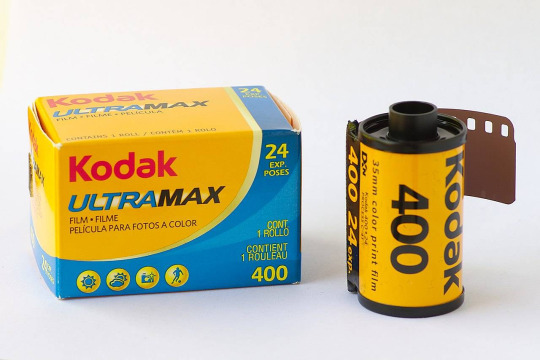
As a 400 ISO film, produced by Kodak, most of the time Ultramax was overlooked because of another line of Kodak’s 400 ISO film, Portra 400. We all know how film photographers worship Portra so much, but as a part of professional film line, we cannot bat an eye on how costly it is, although, the price does come with a godlike quality film photographers starved upon.
Being a consumer-grade film, with 400 ISO giving it a wider versatility, and the fact that it is found abundantly in e-commerce, I was a total sucker for Ultramax, and here’s why.
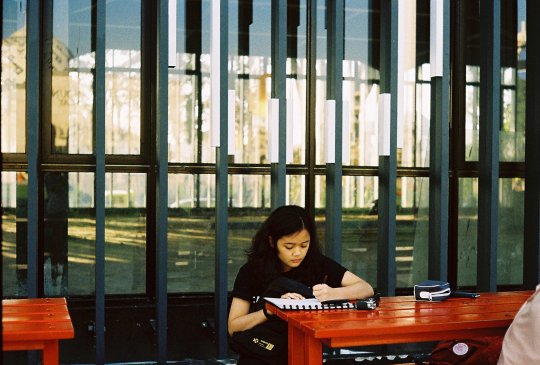
Voigtlander Bessa R - Canon LTM 50/1.8. Frontier Scanner. (Seni Abadi, Bandung)
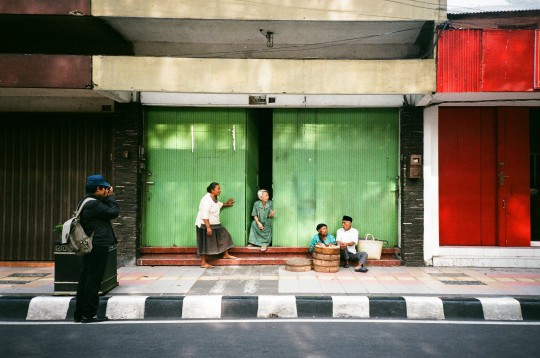
Nikon FM2 - Nikkor HC 50/2. Noritsu lab scanner. (Soup n Film, Jakarta)
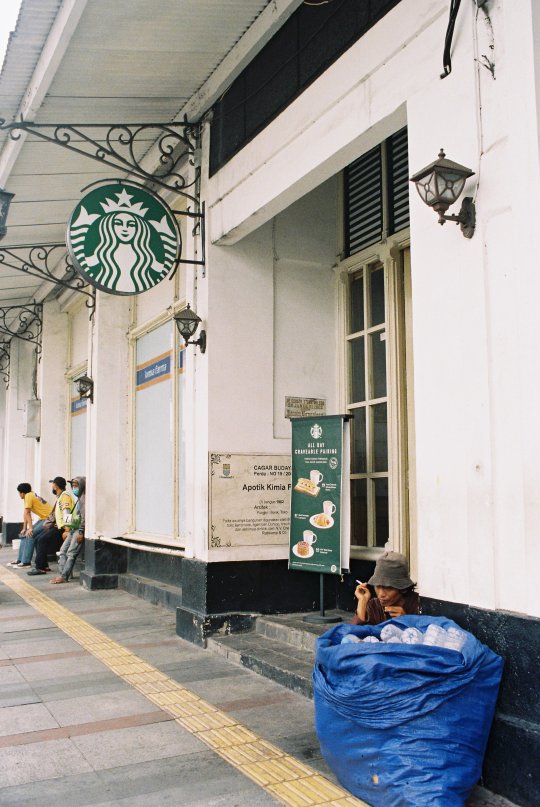
Nikon F3HP - Nikkor 35/2 AIS. Frontier Scanner. (Seni Abadi, Bandung)
Two words that stands out on Kodak Ultramax: sharp. vivid.
I have used this film in a variety of cameras - from pocket cameras to rangefinder and SLRs, and I must say: This film is adequately sharp!
Taking Ultramax for street photography under sufficient amount of light, on high aperture lens, results in really breathtaking photos. It has strong saturation, medium contrast, and renders the colors red and blue in a way that it almost gives off a punchy right-in-your-face, especially when you rate it at box speed.
Given its high ISO, it is more versatile and handles low light pretty well.
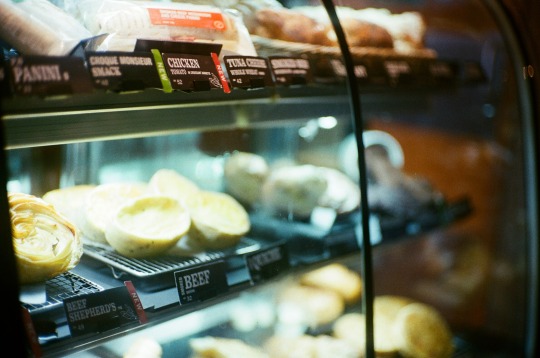
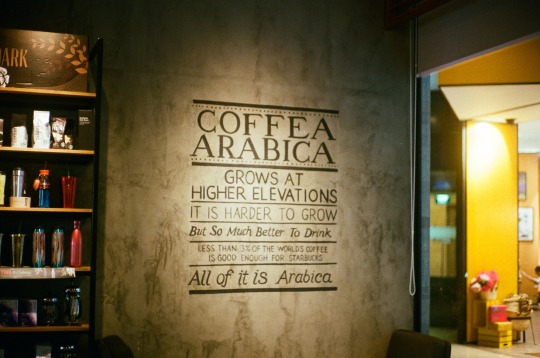
Voigtlander Bessa R - Canon LTM 50/1.4. Frontier Lab Scan (Seni Abadi, Bandung).
Now, another thing worthy to take note of: its dynamic range. Needless to say, when exposed properly, with just the right amount of light, the dynamic range of this film is surprising.
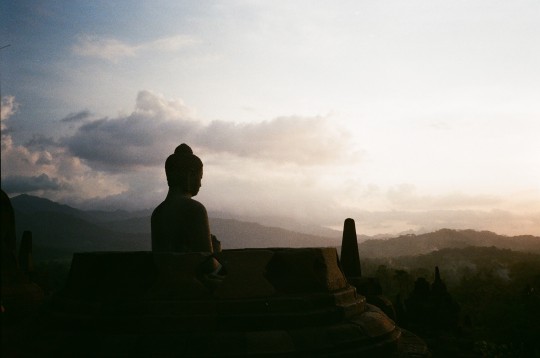
Leica Mini 3 (Summar Lens) - Noritsu Lab Scan (Soup n Film, Jakarta). It was merely a pocket sized camera, yet it produced such impeccable shades of the clouds in the sky.
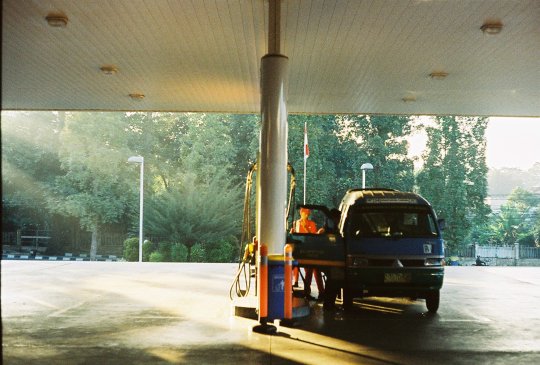
Voigtlander Bessa R - Canon LTM 50/1.8. Frontier scan (Seni Abadi, Bandung). Look at the beautiful, breathtaking sunbeam.
Taking Ultramax for a morning stroll or golden-hour photowalk, given its warm characteristic, results in a more pronounced yellow. This should be taken into consideration especially when you’re taking portrait photos during those hours.
When used on a overcast day, the colors falls flat and the shadow area appears muddy. I tend to overexpose my films, rating 400 ISO at 200 and sometimes at 100, etc. However, I found myself struggling with the exposure latitude of Ultramax,
Another thing worth noting is that, under harsh light, this film struggles a bit as the highlight would easily blown out.
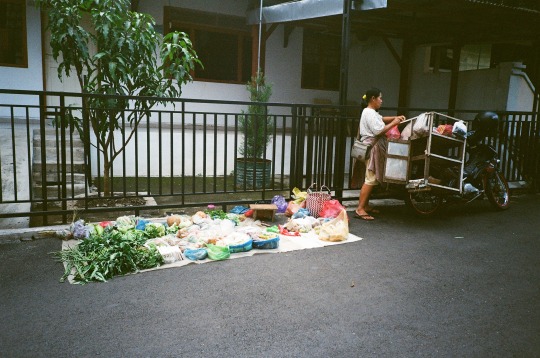
Leica Mini 3 (Summar Lens) - Noritsu Lab Scan (Soup n Film, Jakarta).

Nikon F3HP - Nikkor 35/2 AIS. Rated at 200. Scanned on Frontier. (Seni Abadi, Bandung)
Personal Thought:
How do I feel about Kodak Ultramax?
It’s kinda hard to tell. Personally, this is a film that I really loved, since it was one of the first films I used during my very early days of film photography. Generally speaking, the results are great. However, even with a whole bunch of rolls I’ve spent with Ultramax, I’m still struggling with the idea of when is the perfect time to use Ultramax?
Some say it’s perfect for street photography, some say it’s an all-rounder film, ready for the get-go. But I’m not really sure if Ultramax falls under any particular category. It is a versatile film, readily available as well.
I used to LOVE this film so much, but if I have the choice, I would go with Xtra 400. Regardless, if there’s only Ultramax available in my fridge, I would still go out on photowalks with an Ultramax.
And that, is how I see my good old friend Trico. My friends would reminisce the times they had with that sick looking Paddle Pop Rainbow, but my childhood days were always Trico. Now that we’re adults (DAMN), they’ve outgrown Paddle Pop but I could never walk away from Trico.
However, if my parents called, I’d definitely ask for Cornetto.
What would be the equivalent of Paddle Pop Rainbow in film stock universe, you ask?
Probably the Agfa Vista.
I don’t know why I’m talking about ice creams.
Verdict:
In Indonesia, as of December 2020, Kodak Ultramax 400 is readily available in IDR115.000 - 130.000.
Having similar price range and ISO with Fujifilm’s consumer grade Xtra 400, we can’t help not to compare these two. The film grain is less apparent compared to Xtra 400, with impeccable sharpness, punchy contrast and saturated colors. As expected from a Kodak manufacturer, the warm tones of this film is definitely its signature look. Definitely an all-rounder film stock!
2 notes
·
View notes
Text
Noritsu Koki Co. announced its original Quick Service System (QSS-1) photofinishing platform in 1976. That was just three years before Noritsu America released the QSS-2, the digital minilab that kickstarted one-hour photo processing. The QSS-2 incorporated a microprocessor capable of controlling the photofinishing operation—from film development through color printing—in 45 minutes.
... Eastman Kodak Company introduced its first American-made photofinishing minilab in July 1987. The landmark product, the Minilab System 20, was intended for a low-volume photofinishing market. This included college bookstores, food and drugstores, video stores, amusement parks as well as hotels. The system could handle 20 orders an hour; it also provided the same photofinishing quality as Kodak’s high-speed 3510 color printer, introduced in October 1986.
...Fuji Photo Film introduced its first chemical minilab system in 1984 and the first Frontier digital minilab, the Fuji Frontier 1000, in 1996. The Frontier 1000 was the first minilab to scan analog color negatives and output them on photographic paper using a laser printer. Among its most significant features was the ability to scan and digitally correct individual film frames, thereby enhancing print quality.
https://www.fujifilm.com/us/en/business/photofinishing/digital-lab-solutions/frontier-LP5700R/specifications
0 notes
Video
At the Market by Zoltán Árva-Tóth Via Flickr: Taken in Budapest on Kodak Ektar 100 film. Ricoh TLS 401 Auto Chinon 21mm f/3.5 lens
#market#stalls#fruit#produce#film photography#Kodak Ektar 100#Chinon 21mm#Ricoh TLS 401#Noritsu#Noritsu Scan#Noritsu Minilab Scan
4 notes
·
View notes
Text
Best Photo Scanning Service in Washington DC
If you are looking for the best photo scanning service in Washington DC, Visit Photo 60 Studio. They feature the latest equipment and experienced darkroom technicians. They make sure all films are professionally processed with high end Noritsu Film Processors. Visit their website to get their service now.
0 notes
Photo

This one …
#photographers on tumblr#original photographers#plants and flowers#flowers#Echinacea#Sedum#Ferrania P30 Alpha#Kodak D-76#FILM Ferrania#Leica MP 0.85#Leica Dual-range Summicron 2/50#Noritsu Scan#Photoshop#Meldorf
89 notes
·
View notes
Photo
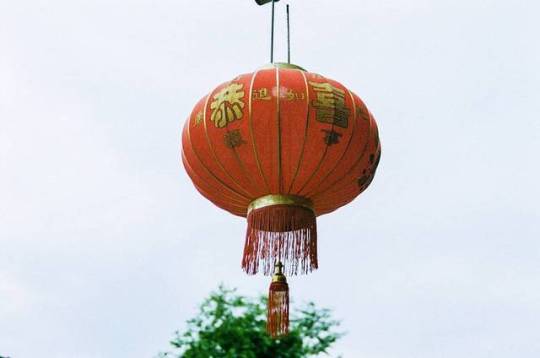
Selamat Tahun Baru Imlek 2018. Semoga selalu diberikan rejeki yang berlimpah, sukacita, keceriaan, berkah, kebahagiaan, kesuksesan, diberikan kesehatan dan kedamaian. Gong Xi Fat Cai 2569! Yashica FX-3 Super (No LM) Lens Kit 35-70mm f/3.5 - 4.8 Lomography Iso 100 Develop & Scan @centraldigitaljogja #35mm #35mmfilm #35mmphotography #35mmfolks #indo35mm #jogja35mm #フィルム #フィルムカメラ #film #filmpht #фильм #lomography #iso100 #noritsu #analogue #analogcamera #analogphotography #iusefilm #ishootfilm #back2thebase #filmforever #filmphotography #photography #CNY #ChineseNewYear #YearOfTheDog #lantern #chineselantern #GongXiFaCai #imlek
#35mmfilm#iusefilm#back2thebase#gongxifacai#filmphotography#фильм#chineselantern#ishootfilm#フィルムカメラ#yearofthedog#film#35mm#indo35mm#lomography#フィルム#lantern#analogphotography#chinesenewyear#35mmfolks#noritsu#filmforever#cny#imlek#analogcamera#35mmphotography#analogue#iso100#filmpht#photography#jogja35mm
2 notes
·
View notes
Photo

Scanning that film! @fullcirclebalto #fullcirclefineart #noritsu #filmscanner #rollscanner #analog #photography #film
1 note
·
View note
Text
Comparing an epson v600 to a noritsu scanner
Introduction
More than half of the folks that call me to ask about pricing for developing and scanning are turned off by my price. As of February 24, 2021, I charge $33.25 + tax for developing and scanning 35mm or 120 films. Regardless of whether it is color or BW or 24 exposures or 35 exposures.
The typical caller is a newbie photographer that is just looking for the cheapest price. So, I decided to do this post to show a side-by-side comparison of what a typical home scanned negative looks like and what a professional photo lab scan looks like. I shot color and a BW film and developed it myself and then, scanned it using my Epson V600. After that, I sent the negatives to my vendor who uses a Noritsu scanner. Below are the results. On a smaller screen such as a phone or a tablet, you may see minimal differences between the scans. However, on a larger monitor or when you print, the difference stands out. I adjusted both sets for contrast and brightness.
So, if you are just starting out in photography, go with someone that offers a $15-20 deal to develop and scan. But, if you shoot professionally and are spending money on buying professional-grade films, your Customers will appreciate the superior quality of the Noritsu scanner. That will result in repeat business. Your Customers will be willing to pay the premium price for the finer scans and prints.
BLACK & WHITE - Ilford HP5 400 ISO
COLOR - Fuji C 100 ISO
Order Your 35mm or 120 Film Developing + Scanning + Printing Below
0 notes